How to check Raspberry Pi version and other system information
Raspberry Pi is a popular and economical single-board computer with a lot of interesting use cases. If you have one and want to check the Raspberry Pi version or other system information like CPU details, CPU temperature, GPU information, memory details, etc., you can do it this way. easily using the Terminal window.
Check your Raspberry Pi version or board model
Each Raspberry Pi is based on a specific model or board version, such as Raspberry Pi 5, Raspberry Pi 4, etc. On the Raspberry Pi OS, much of the system information can be found in the 'file system' . /proc' .
If you want to check your Raspberry Pi version, execute the following command in a Terminal window:
cat /sys/firmware/devicetree/model 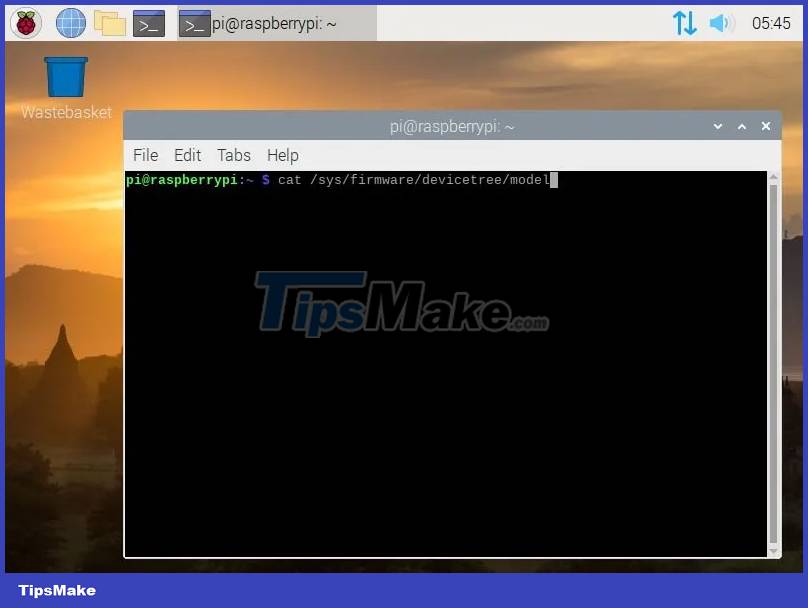
The output will display the Raspberry Pi's board model number, which you may need if you want to replace it or need spare parts for it. You may also need this information for different Raspberry Pi projects you are thinking of.
You can also use the replace command to check your Raspberry Pi version. Enter the following command and press Enter :
sudo raspi-config 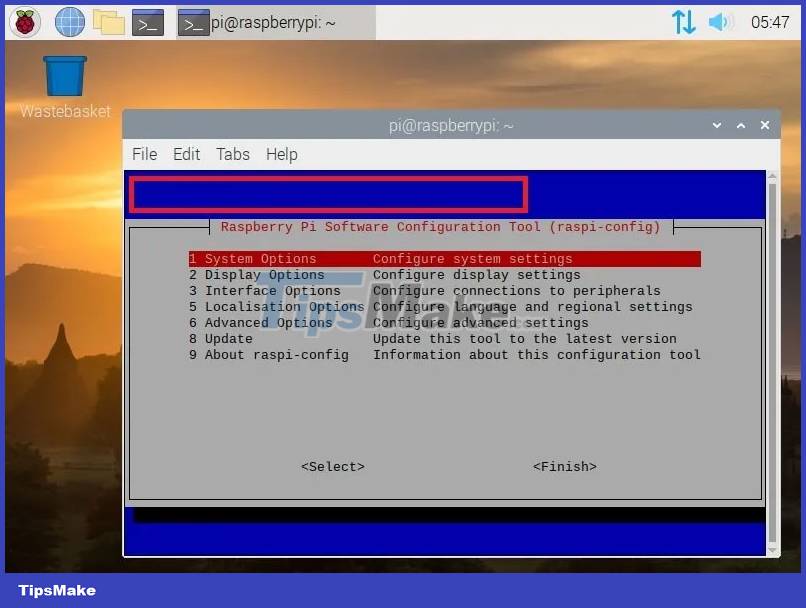
The output will open the Raspberry Pi Software Configuration Tool and will display the board model at the top of the window, just below the menu options.
Check the Raspberry Pi CPU model
In the '/proc' file system, you can access the cpuinfo file, which contains data about your Raspberry Pi CPU. This is useful when you are curious about CPU architecture, manufacturer, serial number, etc.
To access this information, simply execute the following command:
cat /proc/cpuinfo 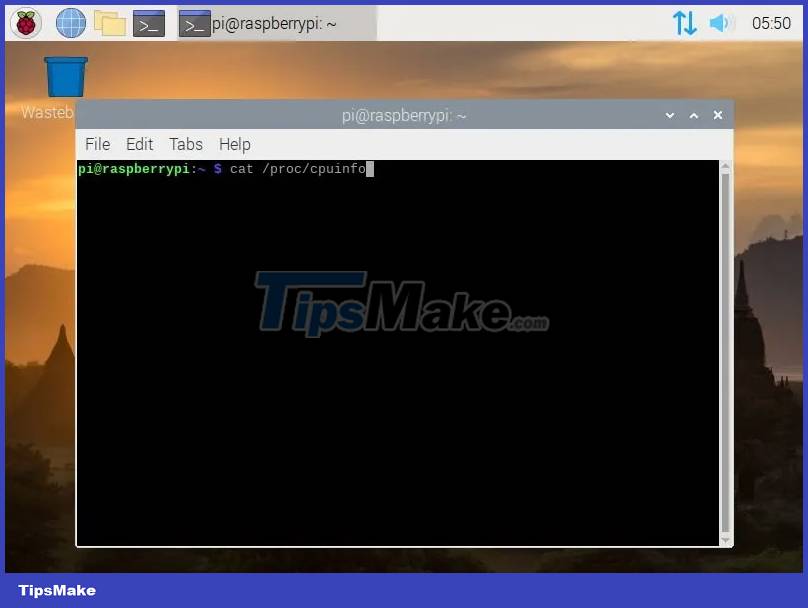
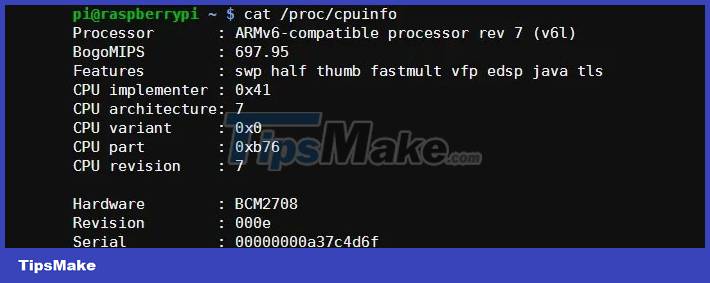
The output will tell you a few things about your Raspberry Pi. You'll see the CPU model and vendor in the corresponding line items. For example, if you see something like ARMv6 Processor or ARMv7 Processor , this is because the Raspberry Pi has a processor based on the ARM architecture (and not Intel like in Windows PCs and Macs)
You may also see processors using ARMv6 or AMRv7 instruction sets. The ARMv6 instruction set is one of the older ARM designs. Most modern smartphones and tablets use the ARMv7 architecture, and the new 64-bit ARMv8 instruction set is becoming more and more popular.
Check Raspberry Pi OS version
Besides hardware information, you can also access software information about your Raspberry Pi, such as the operating system version. Almost all Raspberry Pi units will run some or other version of Linux (although you can also run Windows 11 on the Raspberry Pi).
To check exactly which Linux distribution and version you are running, you can execute the following command:
cat /proc/version 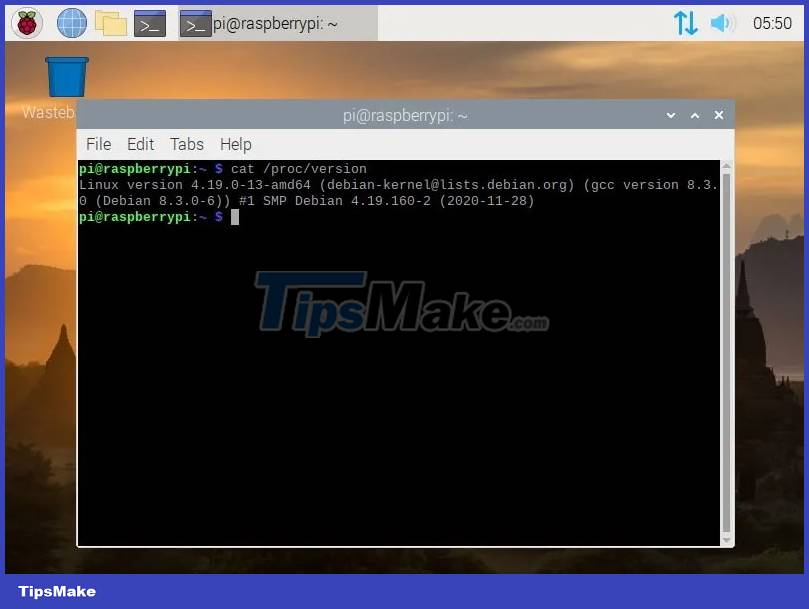
The output will show you a line of detailed information about your operating system version.
Check Raspberry Pi CPU temperature
Information found in '/proc' is available on all Linux systems; However, the Raspberry Pi also has a special command available to display information specific to the Raspberry Pi board. The vcgencmd command can access many Raspberry Pi-specific information, one of which is CPU temperature.
If you like to overclock your Raspberry Pi, you will need access to CPU temperatures a lot. Execute the following command to do so:
vcgencmd measure_temp 
The output will be a single line reporting the temperature:
temp=50.8'CCheck Raspberry Pi CPU clock speed
If you're overclocking or simply using one of those Raspberry Pi cases that are too compact and don't have enough airflow, you'll probably also want to check your CPU frequency. Using a simple command, you can see the current CPU frequency or clock speed along with the minimum and maximum frequency.
Execute the following commands one after another:
cat /sys/devices/system/cpu/cpu0/cpufreq/scaling_cur_freq cat /sys/devices/system/cpu/cpu0/cpufreq/scaling_min_freq cat /sys/devices/system/cpu/cpu0/cpufreq/scaling_max_freq 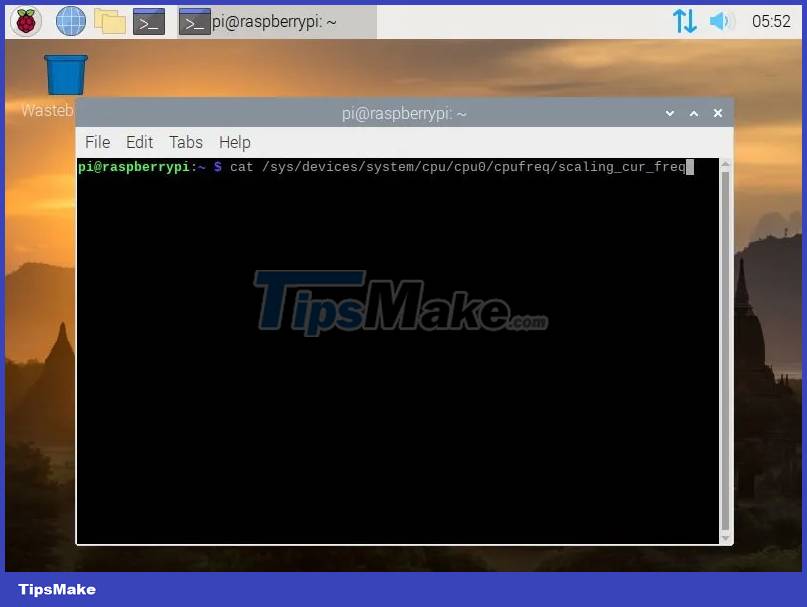
The output will be in kilohertz (kHz), so 950,000 will mean the CPU frequency is 950 MHz.
Check Raspberry Pi CPU voltage
If you want to find the internal voltage of your Raspberry Pi CPU, there is another vcgencmd command that you may find useful. Enter the following information in the Terminal window and press Enter :
vcgencmd measure_volts core 
The output will look something like this:
volt=1.20VThis command can also be used to find the voltage for sdram_c, sdram_i and sdram_p. The following shell command will display all voltages:
for id in core sdram_c sdram_i sdram_p ; do echo -e "$id:t$(vcgencmd measure_volts $id)" ; doneCheck Raspberry Pi GPU temperature and memory usage
On the Raspberry Pi board, the temperature sensors for the CPU and GPU are the same. Therefore, the same command used to check CPU temperature can also be used here:
vcgencmd measure_tempTo check GPU memory usage, you can execute the following command:
vcgencmd get_mem gpu 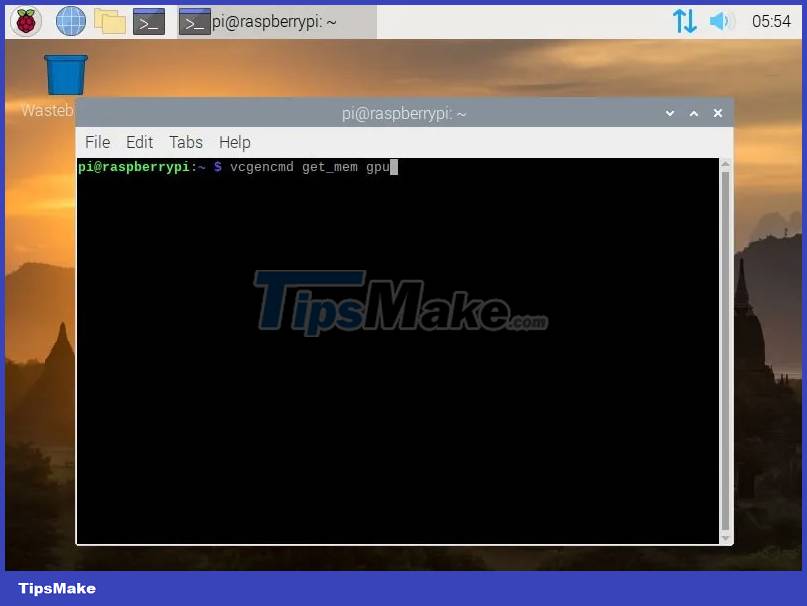
What this command actually shows is the cable's allocation of GPU memory in megabytes (MB).
Check Raspberry Pi RAM information
You can also check your Raspberry Pi's RAM or memory details if you want, such as how much RAM is available or even how much hard drive space you have. To do this, execute the following command:
free -h 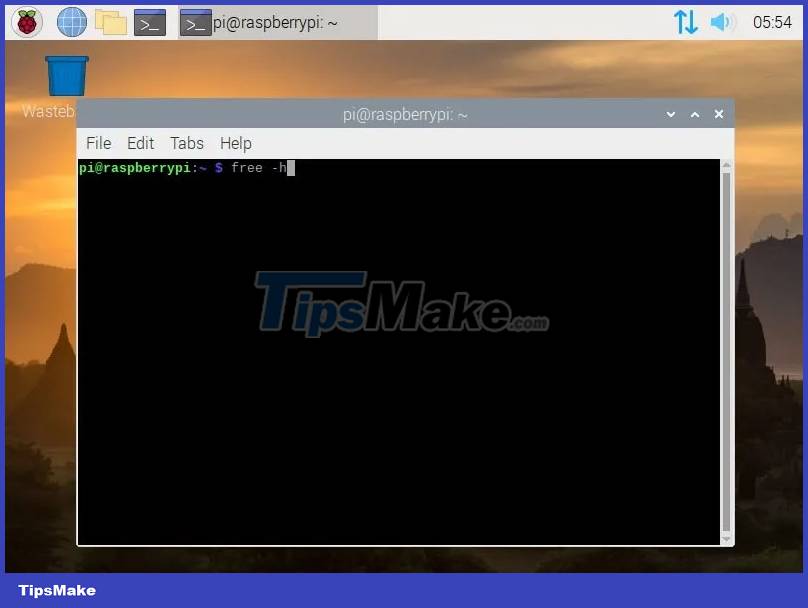
The output will show you total memory, used memory, free memory, shared memory, cache memory, and available memory on the same line. You can also view hard drive memory in the Swap line .
If you want more details about RAM, you can execute the following command:
cat /proc/meminfo 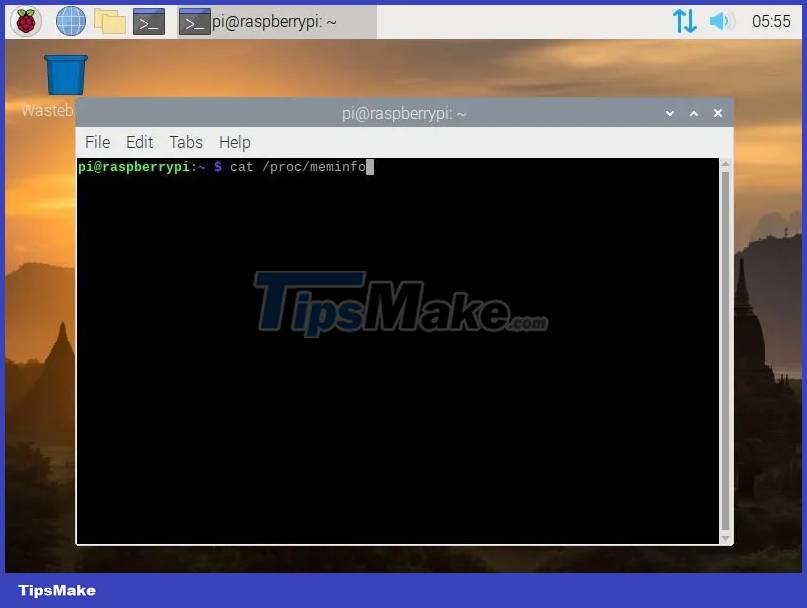
This output will show you information such as active memory, inactive memory, mapped memory, dirty memory (memory representing data on the drive that has been changed but not written out yet). ) and hardware damaged memory.
Check out the Raspberry Pi hardware codec
If you want to see which hardware codecs are enabled on your Raspberry Pi, the codecname parameter can be quite useful. You just need to enter the command along with the name of the codec you want to query. Enter the following information and press Enter :
vcgencmd codec_enabled CODECNAMEHere, CODECNAME should be replaced by one of the options H264, MPG2, WVC1, MPG4, MJPG or WMV9 .
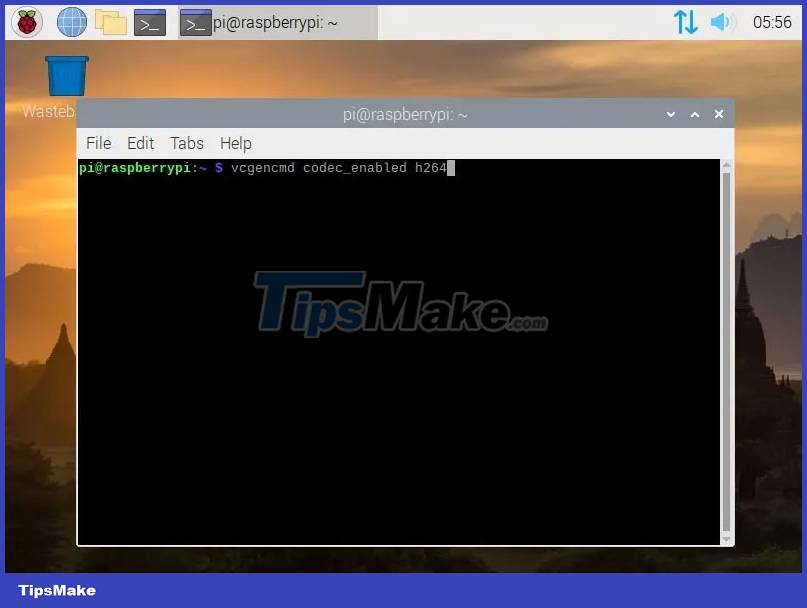
To save time repeating commands for every codec, you can use this simple shell script:
for codec in H264 MPG2 WVC1 MPG4 MJPG WMV9 ; do echo -e "$codec:t$(vcgencmd codec_enabled $codec)" ; doneYou should read it
- 5 ways to make good use of Raspberry Pi 4
- Instructions on how to check the PHP version
- Raspberry Pi OS finally has a 64-bit version
- Raspberry Pi 4 officially launched, quad-core Cortex-A72 1.5 GHz, maximum RAM of 4GB
- How to add an ADC to Raspberry Pi: What you need to know
- Raspberry Pi Zero vs Model A and B, how are they different?
- Raspberry Pi 3 Model A +: 8-core chip, clocked at 1.4GHz, priced at $ 25
- 4 reasons to buy an old Raspberry Pi model
May be interested
- Check version information in SQL Server
 this article will show you in detail how to use the @@ version query to check the information that sql server version is using.
this article will show you in detail how to use the @@ version query to check the information that sql server version is using. - 10 operating systems you can run with Raspberry Pi
 there are many other operating systems that can run on a raspberry pi. just make sure you have the screen, mouse and keyboard in hand before booting!
there are many other operating systems that can run on a raspberry pi. just make sure you have the screen, mouse and keyboard in hand before booting! - How to install an operating system for Raspberry Pi
 the article will show you how to install and run your new operating system on pi, as well as how to copy your perfect settings to fix errors quickly.
the article will show you how to install and run your new operating system on pi, as well as how to copy your perfect settings to fix errors quickly. - Raspberry Pi 4: All information about the product and launch date
 this is the latest information about the next raspberry pi 4 product of raspberry pi
this is the latest information about the next raspberry pi 4 product of raspberry pi - How does the Raspberry Pi file system work?
 where are your files? why are there so many folders and subfolders? the goal of today's article is to give you an overview of the file system on your raspberry pi (as well as on any linux device).
where are your files? why are there so many folders and subfolders? the goal of today's article is to give you an overview of the file system on your raspberry pi (as well as on any linux device). - Instructions on how to check the PHP version
 if you are interested in adding new features on your site or trying to identify a programming error, you may have to check the php version that the server is currently using. join tipsmake.com to consult the article on how to check the php version below!
if you are interested in adding new features on your site or trying to identify a programming error, you may have to check the php version that the server is currently using. join tipsmake.com to consult the article on how to check the php version below! - Raspberry Pi 4 officially launched, quad-core Cortex-A72 1.5 GHz, maximum RAM of 4GB
 after the last days of waiting, the raspberry pi 4 computer has officially been released with many improvements and significant improvements compared to the raspberry pi 3.
after the last days of waiting, the raspberry pi 4 computer has officially been released with many improvements and significant improvements compared to the raspberry pi 3. - How to update your Raspberry Pi to the latest Raspbian operating system
 you need to update your raspberry pi to the latest raspbian version, but can't find a way to do it? here are four ways to get the latest raspbian version on your device!
you need to update your raspberry pi to the latest raspbian version, but can't find a way to do it? here are four ways to get the latest raspbian version on your device! - How to add an ADC to Raspberry Pi: What you need to know
 raspberry pi lacks analog input. this puts it at a disadvantage compared to microcontroller-based boards like the arduino.
raspberry pi lacks analog input. this puts it at a disadvantage compared to microcontroller-based boards like the arduino. - Raspberry Pi Zero vs Model A and B, how are they different?
 you want to buy a raspberry pi, but when you search, you have a problem: why are there so many raspberry pi models? although all of the different raspberry pi can do many similar tasks, there are tasks that specific boards will be more suitable for.
you want to buy a raspberry pi, but when you search, you have a problem: why are there so many raspberry pi models? although all of the different raspberry pi can do many similar tasks, there are tasks that specific boards will be more suitable for.










 How to remove personal data from public records on the Internet
How to remove personal data from public records on the Internet What is super artificial intelligence AGI that makes scientists scared?
What is super artificial intelligence AGI that makes scientists scared? Does Facebook Messenger notify you when you take a screenshot?
Does Facebook Messenger notify you when you take a screenshot? How to use Samsung's Wireless PowerShare feature to wirelessly charge other devices
How to use Samsung's Wireless PowerShare feature to wirelessly charge other devices What is the PC bottleneck phenomenon? How to prepare?
What is the PC bottleneck phenomenon? How to prepare? How to permanently delete Steam account
How to permanently delete Steam account